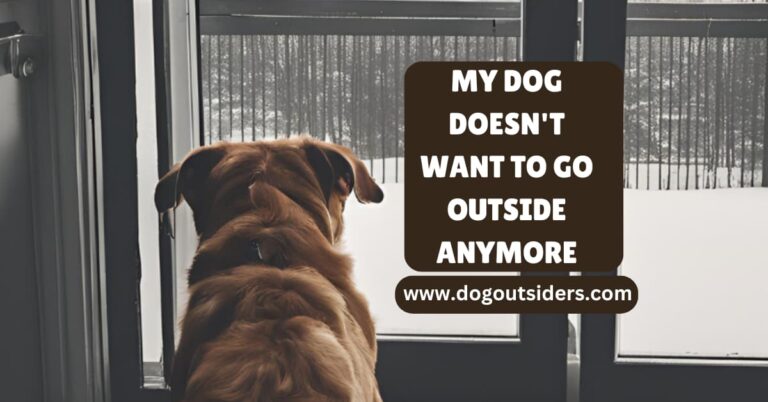Dogs have always amazed me with their intelligence, like a video I saw recently of a smart pup who learned to ring a bell to go outside. This behavior shows the deep understanding and communication abilities of our furry companions. It goes beyond just meeting their needs; it’s about actively finding ways to express their desires effectively. This clever method demonstrates the strong bond between humans and dogs, stressing the importance of clear communication in our relationships with pets. Learning how dogs adapt and learn can improve our interactions with them, leading to stronger connections and mutual understanding. Dog rings bell to go outside to communicate isn’t merely a cute trick; it showcases their intelligence and eagerness to engage meaningfully with us.
Key Takeaways:
- Start with the Right Bell: Choose a bell that is easy for your dog to ring, such as a small jingle bell or a bell with a large, flat surface.
- Consistent Training is Key: Follow a step-by-step training process to teach your dog to associate ringing the bell with going outside for potty breaks.
- Celebrate First Successes: Encourage and praise your dog when they ring the bell for the first time to reinforce the behavior positively.
- Reward Good Behavior: Use treats or verbal praise to reward your dog every time they successfully rings the bell to go outside.
- Use Bell Training for Potty Breaks: Implement the bell training specifically for potty breaks to establish a clear communication method with your dog.
- Monitor and Adjust: Keep an eye on your dog’s bell-ringing behavior and adjust training techniques if there is excessive or unnecessary ringing.
Understanding Bell Training

Teaching Process
Bell training involves teaching a dog to ring a bell when they need to go outside. This process helps dogs communicate their needs effectively.
I start by hanging a bell on the door handle at the dog’s nose level. I then reinforce the behavior by giving treats whenever the dog rings the bell.
Benefits of Bell Training
Bell training helps prevent accidents in the house, as dogs can signal when they need to go out. It also strengthens the bond between the owner and the pet.
Bell training was a game-changer in my dog’s potty routine. Once my dog learned to use the bell, I noticed a significant decrease in indoor accidents.
Consistency is Key
Consistency is crucial in bell training to ensure that the dog understands the purpose of ringing the bell. Owners should establish a routine and stick to it.
I found that being consistent with bell training not only helped my dog understand but also made it easier for me to predict when he needed to go outside.
Selecting the Right Bell

Types
Various types of bells are available for your dog. Sleigh bells, jingle bells, and service bells are popular choices for bell training.
I prefer using sleigh bells as they produce a distinct sound that my dog easily recognizes. These bells are durable and have a clear chime, making them ideal for training purposes.
Criteria
Consider the size of the bell when choosing one for your dog. It should be large enough for your furry friend to hit with their paw or nose easily.
The bell should also be durable enough to withstand daily use. Look for materials like brass or stainless steel that can endure wear and tear over time.
Accessibility
Ensure the bell is easily accessible to your dog. It should be placed at a height where they can reach it comfortably without straining.
I always hang the bell on a hook next to the door at my dog’s eye level. This makes it convenient for him to ring whenever he needs to go outside.
Step-by-Step Bell Training
Introducing the Bell
To commence bell training with your dog, place the bell near the door they use to go outside. Encourage your dog to sniff and investigate the bell by associating it with treats.
I remember when I first introduced the bell to my dog. Training sessions were short but consistent, helping my furry friend grasp the concept quickly.
Associating the Bell with Going Outside
Once your dog is comfortable around the bell, teach them to ring it before going out. Hold a treat next to the bell and encourage your dog to touch or paw at it. When they do, reward them with praise and a treat.
My dog initially struggled to understand the connection between ringing the bell and going outside. However, with patience and consistency, he eventually mastered this skill.
Importance of Positive Reinforcement
During bell training, positive reinforcement plays a crucial role in reinforcing desired behaviors. Each time your dog rings the bell successfully, reward them immediately with treats and verbal praise.
Consistency is key when using positive reinforcement techniques during training. Celebrate small victories along the way to keep your dog motivated and engaged in the learning process.
Encouraging First Bell Rings
Bell Placement
Place the bell near the door your dog uses to go outside. Ensure it’s at a height where your dog can easily reach and ring it. When starting, gently tap the bell yourself to produce the sound, helping your dog associate it with going outside. Encourage your dog to pay attention to the bell by using treats or toys near it, creating positive associations.
Making the Bell Appealing
Choose a bell that makes a clear, distinct sound that will attract your dog’s attention easily. Attach the bell to a string or rope for easier access and manipulation by your furry friend. Consider using a bell with bright colors or interesting shapes to make it visually appealing to your dog.
Importance of Patience
Remember that every dog learns at their own pace, so be patient throughout this training process. Consistency is key – practice ringing the bell with your dog multiple times a day, especially before taking them outside. Refrain from getting frustrated if your dog doesn’t grasp the concept immediately; stay calm and positive during training sessions.
In my experience, my dog took a few days to understand the purpose of ringing the bell, but with consistent training and rewards, he eventually got the hang of it.
Rewarding Successful Bell Use

Consistent Rewards
Consistency in rewards is crucial for reinforcing the bell-ringing behavior in your dog. By providing treats or praise every time your dog rings the bell to go outside, you are positively reinforcing this desired action. This consistency helps your dog associate ringing the bell with going outside.
Varied Rewards
Offering a variety of rewards can also be effective in maintaining your dog’s interest and motivation to use the bell. Apart from treats, consider using verbal praise, playtime, or a quick outdoor walk as rewards. Mixing up the rewards keeps the training exciting for your dog.
I remember when I first started training my dog to ring a bell to go outside. It was challenging at first, but with consistent rewards and patience, my furry friend eventually grasped the concept. Using a mix of treats and playtime as rewards kept him engaged throughout the training process.
Timing of Rewards
The timing of rewards is another essential aspect to consider when training your dog to use the bell effectively. Ensure that you reward your dog immediately after they ring the bell, linking the action directly to the reward. This immediate reinforcement strengthens the association between ringing the bell and receiving a reward.
When training my dog, I noticed that timing was key in reinforcing the behavior. By rewarding him promptly after he rang the bell, he quickly learned to repeat this action whenever he needed to go outside.
Applying Bell Use for Potty Breaks
Timing
Using a bell to signal potty breaks for your dog requires consistency and patience. Start by associating the bell with going outside for bathroom needs.
Treatment is an essential component of this training method. Each time your dog rings the bell, reward it with a small treat. This positive reinforcement will strengthen the connection between bell ringing and going outside.
Frequency
Ensure that you establish a routine for using the bell. Take your dog out immediately after they ring the bell to reinforce the association between ringing the bell and going outside.
Consistency is key when it comes to training your dog to use the bell effectively. Set specific times during the day for potty breaks, and encourage your dog to ring the bell each time.
Connection
The bond between bell ringing and outdoor activities should be clear to your dog. Over time, they will understand that ringing the bell leads to exciting outdoor adventures.
Preventing Excessive Bell Ringing
Training Techniques
Consistency in training is key to preventing excessive bell ringing. Establish clear cues for when it’s time to go outside. Training your dog to ring the bell only when necessary involves rewarding desired behavior and ignoring unnecessary ringing.
Differentiating Bell Rings
Observe your dog’s behavior to differentiate between genuine and unnecessary bell rings. Look for signs like pacing or whining. If your dog rings the bell but doesn’t eliminate it, bring them back inside immediately to avoid reinforcing unnecessary ringing.
Importance of Not Reinforcing
Avoid reinforcing unnecessary bell ringing by not responding to false alarms. This helps prevent confusion for your dog. Refrain from letting your dog out every time they ring the bell without a valid reason, as this can lead to unwanted behavior.
In my experience, setting a consistent schedule for potty breaks has been crucial in preventing excessive bell ringing. By sticking to a routine, my dog learned when it’s appropriate to ring the bell. Providing ample opportunities for bathroom breaks during the day helped reinforce the purpose of using the bell correctly.
Adjusting Bell Location
Observing Behavior
When training your dog to use a bell to go outside, it is crucial to observe behavior. If your dog needs help to reach the bell or seems disinterested, consider adjusting its location. Dogs may have preferences for the height or accessibility of the bell.
I noticed that when I moved the bell to a lower position, my dog interacted with it more frequently. This simple adjustment significantly improved his communication about going outside.
Relocating Strategically
Relocating strategically can make a big difference in your dog’s response. If your dog tends to paw at the bell too aggressively, placing it slightly higher may help. Conversely, if your dog ignores the bell, lowering it could increase engagement.
Moving the bell closer to the door made it easier for my dog to associate ringing it with going outside. This change helped him understand and respond better to the training process.
Enhancing Training Results
Adjusting the bell’s location can enhance training results and optimize your dog’s learning experience. Small changes in positioning can lead to significant improvements in communication between you and your pet.
I found that experimenting with different locations until finding the one that best suited my dog’s behavior was key. Once I identified the ideal spot for the bell, my dog quickly grasped its purpose and began using it consistently.
Conclusion:
After mastering bell training for your furry friend, remember that consistency is key. Keep rewarding successful bell use and be patient with the process. Adjust the bell location if needed to ensure your dog’s comfort and continued success. Prevent excessive ringing by monitoring your pet’s behavior and adjusting training accordingly. By following these steps, you can establish a reliable communication method with your dog for potty breaks.
Now that you have the tools to train your dog to ring a bell to go outside, take action and start implementing these techniques. Remember, patience and positive reinforcement are essential in this process. With dedication and consistency, you’ll soon enjoy the benefits of effective bell training with your beloved pet.
FAQ,s:
Bell training teaches dogs to signal when they need to go outside, reducing accidents inside the house. By associating the bell with going outside, the dog learns to communicate its needs effectively.
Choose a bell that is sturdy and easy for your dog to reach. A hanging bell with a clear sound works well. Avoid overly complex bells that may confuse your dog.
Most dogs can be trained to use a bell successfully. However, some may take longer than others to grasp the concept. Consistent training and positive reinforcement are key factors in teaching your dog this skill.
To prevent excessive ringing, ensure that your dog only receives attention or goes outside when it genuinely needs to go potty. Avoid reinforcing unnecessary ringing by ignoring it or redirecting its behavior positively.
Adjusting the bell’s location may be necessary if your dog is having difficulty reaching it or if it’s causing inconvenience. Experiment with different placements until you find a spot that is easily accessible and encourages your dog to use it effectively.







2 Comments